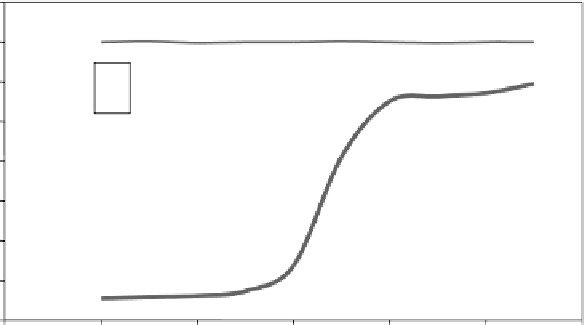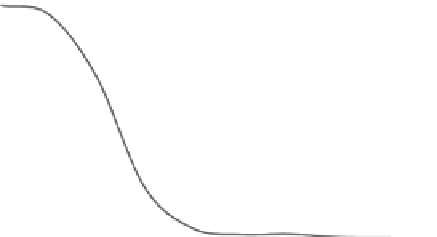Chemistry Reference
In-Depth Information
optimization. Resolving power, specificity, and speed are key chromatographic
method attributes to keep in mind during method development. More details
on HPLC method development process can be found in Chapter 3, and excellent
resources are available to anyone not already schooled in the art [15]. The follow-
ing sections, however, focus on a few highlights and new developments specific to
developing SIMs.
7.3.1.3 manipulating chromatographic selectivity
during method development
Selectivity can be manipulated by any one or a combination of different factors that
include solvent composition, type of column stationary phase, and mobile phase buf-
fers and pH. Chromatographers for the most part are comfortable changing solvents
and column stationary phases to generate a separation. However, advances in HPLC
column technology have recently made possible the use of pH as a true selectivity
tool for the separation of ionizable compounds [16,17]. These hybrid chemistry col-
umns take advantage of the best of both the silica and polymeric column worlds.
They are manufactured using a classical sol-gel synthesis that incorporates carbon in
the form of methyl groups, resulting in columns that are mechanically strong, with
high efficiency, and operate over an extended pH range.
The graphics in Figure 7.2 illustrate why pH can be such a useful tool. As seen in
Figure 7.2, acidic compounds are more retained at low pH, while basic compounds
are more retained at higher pH (neutral compounds are, of course, unaffected). At
pH values utilized traditionally (pH 4-8), a slight change in pH would result in a dra-
matic shift in retention (upslope or downslope of curve). However, by operating at pH
extremes, not only is there 10- to 30-fold difference in retention that can be exploited
in method development, but the method can be made more robust as well, a desirable
outcome with validation in mind. Indeed, the selectivity differences afforded by a
40
35
Neutral
Acid
30
25
20
Robust pH
zone
Robust pH
zone
15
10
5
Base
0
0
2
4
6
8
10
pH
FIgure 7.2
Reversed-phase retention behavior as pH is varied.
























